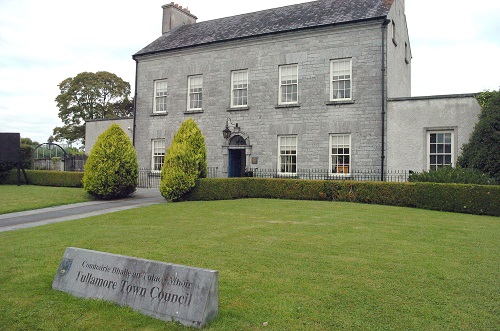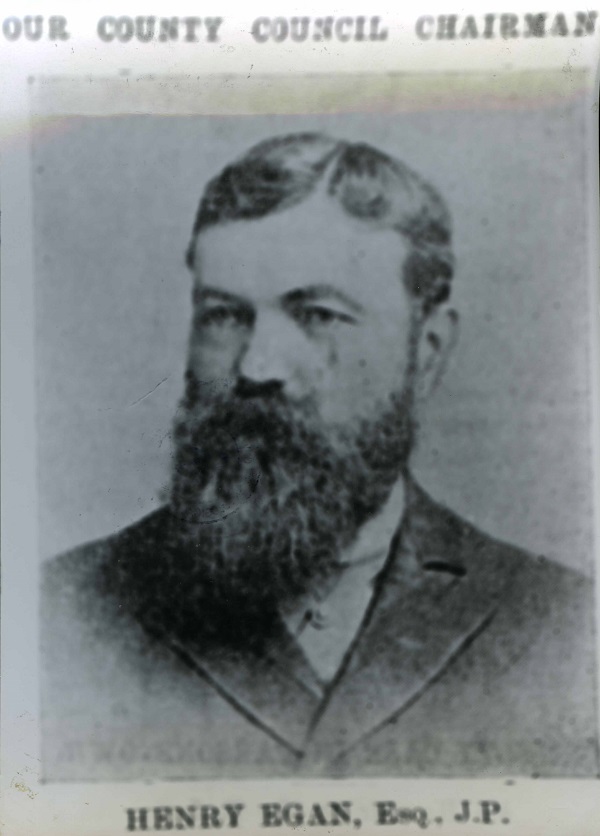
Henry Egan of The Hall (now the Tullamore Town Hall) died on 18 May 1919, one hundred years ago, and on 18 May 2019 his contribution to the economy and to public life in Tullamore will be marked with recollections of his life and times and the launching of a new brand of whiskey in the Egan Collection. The great firm of P. & H. Egan went into voluntary liquidation in 1968 having been in business in Tullamore and the midlands since 1852. Today it is still recalled as the great shop, grocery and department store in Bridge Street where the Bridge House pub, restaurant and hotel are now located. The heritage of the firm in grain handling, malting and wine, brewing and wine and spirits is today celebrated in its association with the new Irish whiskey. The two largest native firms in Tullamore up to the 1960s, Egan’s and Williams’, now have whiskeys associated with them that are known throughout the world. It is something that is distinctively Tullamore and it sends out the message that our midlands heritage counts and that Offaly people can be proud of the commercial heritage of Tullamore and the midlands in the post-Famine years of recovery and up to the 1960s.
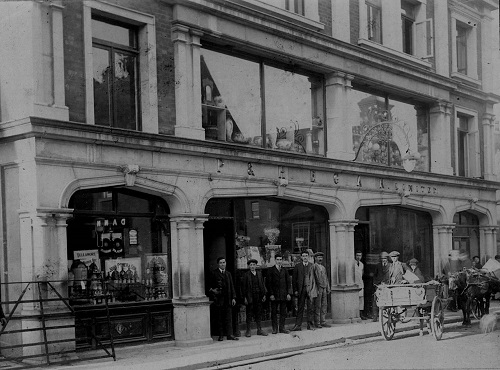
D.E. Williams and Henry Egan
The new Tullamore DEW distillery (2014) representing an investment in Tullamore of about €70 million was built on the heritage foundation of the Michael Molloy (d. 1846) distillery started a short distance from Bridge House in 1829. The Molloy distillery was later owned by Bernard Daly (a nephew, died 1887) and from the 1870s managed and later acquired by Daniel E. Williams (d. 1921). Williams and Henry Egan were at the heart of commercial life in Tullamore throughout the prosperous years from 1891 to the end of the First World War in 1918.
Egan was a much more outgoing public figure than Williams. Henry Egan was chairman of the first county council from 1899 until his retirement in 1910. He was on every public board and was a magistrate – the nominee of the town council. He had briefly lost that status in the 1880s because of his support for the Plan of Campaign prisoners in Tullamore jail in the late 1880s. He had himself been imprisoned for his support for the Land League in 1880. He was of a prominent business and legal family in Moate and with his brother Patrick Egan (died 1897) had developed the business founded by his father Patrick (died 1880) in Tullamore to include the grocery at Bridge Street (1852), the brewery behind the Brewery Tap, Tullamore (1866) and maltings in Market Square (1890). There were other commercial enterprises too including mineral waters, the purchase of Stirling’s in Church Street (1890s), the acquisition of Hayes’ Hotel, Tullamore and (1900s) and other midlands hotels (Dooly’s of Birr and Colton’s of High Street, Tullamore, maltings at Rathangan (1900s) and the development of bar and grocery branch shops at Rathangan, Moyvore, Ballycumber, Kinnitty, Clonaslee, Kilcormac, Tubber (Tober) and Ballycommon.
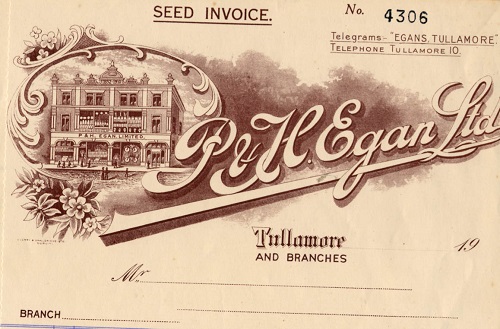
Daniel E. Williams was entirely self-made and came to Tullamore from Mountmellick to work in a mill in about 1862. When the distiller Bernard Daly enlarged his distillery in 1868 he bought the mill beside what is now town park, and probably Williams along with it. Daly liked hunting and the society that went with it and left Williams to manage the distillery. Like Patrick Egan, the elder, he developed a bar and grocery in Barrack/Patrick Street in 1884 and in the early 1890s got into whiskey wholesaling and retailing, drawing on the Daly stocks in the distillery across the street. From there it was mineral waters, grain handling malting and branch houses. By 1900 he was already a rich man and was able to build Dew Park on Charleville Road for about €6,000. Williams made few public pronouncements and seems to have been entirely absorbed in his business. He has left us little or nothing in the way of letters, diaries and photographs. He had three sons, all in the business, and one (Jack, d. 1965) fought in the First World War. The Williams firm survived until 1997 when it was sold to Greencore.
The memory of the Egan and Williams firms is still recalled
Now in 2019 the Egan firm is gone for over sixty years and that of Williams for over thirty years, but the memory of both firms is still green in Tullamore, at least with the older generation. The commercial life of Tullamore in a midlands context was very much in the ascendant in the years up to the 1960s, boosted no doubt by Salts/Tullamore spinning mill in which both Williams and Egan family members played a small part as directors, and to a lesser extent the bacon factory (closed 1989 and where the Lidl new store is located).
Between the two firms they owned almost all of Tullamore town from the canal to the railway stations on the western side of the town and pockets in the Tanyard and Market Square. Then there were the families’ great houses of The Hall of Patrick, Henry and Frank Egan (1890s until 1969), Annaghmore of P.J. Egan (1919-54) and Gayfield (Clonminch farm). For the Williamses it was Dew Park, High Street (now Farrelly’s law office and residence), Auburn in Clonminch, ‘The Bungalow’ and Durrow Abbey. Those who worked for them, especially in Williams, got a great training in business and were able to move out to manage their own businesses and to contribute to the public life of Tullamore.
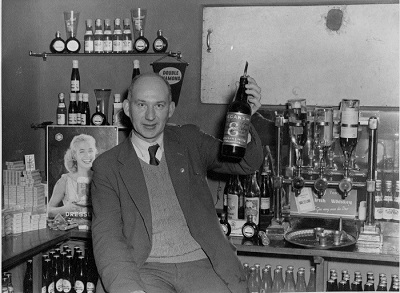
The recent revival of the Irish whiskey industry, to where it was in the 1890s, has meant the nuturing of the memory of Tullamore’s distilling, malting, brewing and wine and spirits heritage. In 2014 that revival went much further with the opening of the Tullamore DEW distillery on a green field site and the first new distillery in Ireland in well over 100 years. Now, in recalling the contribution of that great public figure, Henry Egan, the Egan family are adding to their collection of whiskies remembering the contribution of forebears in the commercial, political and social life of Tullamore.
The funeral of Henry Egan 100 years ago and his life recalled
Henry Egan’s funeral was one we should all have attended! The list in the press (TKI, 25 5 1919) of those who were present was one of the most comprehensive ever published in the local press of any funeral in Offaly since the 1830s and may never have been equalled since. It was a credit to the journalistic skills of the time (even where taken from an attendance register) and, one supposes, not seen in Offaly since the retirement of Geoff Oakley from the Midland Tribune and Tullamore Tribune. The rank order of those who attended was carefully noted as with the listing of the priests in the choir: Jesuits, parish priests, curates, missioner. Later it was Catholic clergy first, followed by other communions and the laity. The report in the King’s County Independent below is only an introduction to the names of all those who were present (or perhaps signed a register or sent offerings):
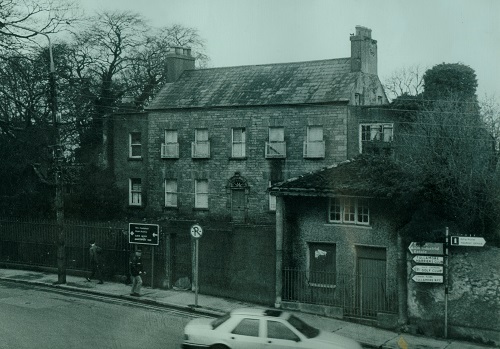
Loss to the Midlands
Death of Mr Henry Egan, J.P
Leading Figure in National Movement
The Friend of Biggar, Parnell & O’Brien
Death Recalls Exciting Political Days
Captain of Industry and Local Public Man
Mr Henry Egan, J.P., head of the well-known Midland Firm of P. & H. Egan, Ltd., died at his residence, the Hall, Tullamore, at half -past 5 o’clock on Sunday morning [18 May 1919].
[The] deceased gentleman had been ailing for the past two years, suffering from acute trouble of the heart and on more than one occasion during that time he had been on the point of death, but made marvellous recoveries under the skilful and attentive treatment of his physician, Dr. Geo. A. Moorhead, J.P.
During the last six months a very perceptible change became noticeable in his condition, and day after day he grew weaker, being unable to leave his bed. He bore his illness, with the greatest fortitude having long previously resigned himself to the will of his Creator.
On Saturday Mr P.J Egan observed the end approaching, and on Saturday night all the members of his family were gathered together to await, while they offered up the prayers for the dying, the solemn and dread moment of dissolution. The end came peacefully, the deceased breathing his last in calm repose.
The late Mr Henry Egan was a son of the late Mr Patrick Egan, of Moate, and was born in that town in May, 1847. He and his brother, the late Mr Patrick Egan, who died in 1897, came to Tullamore in the early fifties and established the business, so successfully carried on since, in the Bridge House, which was then acquired by them. As the years rolled by the business developed under their able captaincy into one of the most successful in the Midlands. The brewing and malting industries were established in connection with it, and in 1896 a Limited Liability Co. was formed, with Mr Henry Egan as Chairman. There is no need to dwell on the rapid development of the brewing and malting industry which took place in they years that followed, suffice it to say that at the time war broke out the firm was the most prosperous in Ireland, the fame of its beverage productions being spread over the Kingdom. The deceased continued to act as Chairman of the Board of Directors until a few years ago, when he retired from active participation in the business, the management or which has since then been entrusted to his son, Mr P.J. Egan, J.P.
A Very Old Stock
The family having originally belonged to Clara, where his grandfather, the date Mr Patrick Egan, was born in 1759. . .
The old [parish priest of Tullamore saw saw the force of Mr Egan’s suggestion as to a new church, and accordingly it was agreed that the project should be launched [1898] as soon as possible, the latter promising a large contribution as a first donation [£500].
Tullamore, from an industrial point of view had NO GREATER BENEFACTOR than the late Mr Egan. He was one of nature’s gentlemen of which any town might feel proud. He did more than a man’s part to make Tullamore a thriving business town. It owes much to him, and as long as his health permitted him to move about he evinced a keen and practical interest in most matters which concerned the wellbeing of his fellow townsmen without distinction of class or creed. In the old days he was a member of the Tullamore Town Commissioners, and was chairman of the body. The improvement of the town was always his aim, and while he was associated with the corporate body many improvements were carried out. He was a member of the old Grand Jury, and when the L.G. Act came into operation he was elected a member of the County Council for the Rahan division of the County, and became the
FIRST CHAIRMAN OF THE NEW PREMIER PUBLIC BODY OF THE COUNTY. He continued to discharge the duties Chairman until about seven or eight years ago. When he felt constrained to relinquish attention to public business. His retirement from the County Council and from the office of Chairman occasioned deep regret among his colleagues, by whom he was held in the highest esteem as a public administrator. The late Mr Egan was a close personal friend of the late Mr Joseph Biggar, the sender of the Constitutional Movement in 1879. He was also
AN INTIMATE FRIEND OF PARNELL AND DAVITT AND OF MR WM O’BRIEN.
It was through his dexterity that the famous suit of Blarney tweed reached the latter while the guest of Mr Balfour in Tullamore jail in 1887. In that year he formed the acquaintance of the late Mr John Mandeville, whose tragic death occurred while undergoing imprisonment in Tullamore.
POLITICAL ASSOCIATIONS
Mr O’Brien and Mr Mandeville were at first imprisoned in Cork jail from which they were subsequently removed to Tullamore, where their jailer, Mr Arthur J Balfour, the then Chief Secretary for Ireland, thought they would be more secure, and in which the discipline and treatment were apparently of a more rigid nature than that of the former prison. They were met on their arrival in Tullamore by Mr Henry Egan, who, as a magistrate for the district, claimed the right of entry to the jail to visit them. On the first occasion he went to the prison to visit them the Governor refused to admit him, but on Mr Egan’s producing the copy of the Act of Parliament having reference to the matter the Governor gave way and admitted him. Other local magistrates including Dr Moorhead were subsequently admitted, and according to the chronicles of the period the attempt of the Dublin Castle gang to prevent the knowledge of the prisoners’ treatment reaching the outside we crowd was frustrated. Mr O’Brien had been subjected to most cruel treatment, his clothes having been removed and the prison garb having been substituted with force. So horrible was the treatment to which Mr Mandeville was subjected that he broke down under it, and like many of the political prisoners of the present day, succumbed to it a month after his release. At the inquest held on the body of Mr Mandeville Mr Egan was examined as a witness.
EVENTFUL ‘81
In 1881, during the Land League days, the late Mr Egan, with a number of others prominently identified with the Land League movement in King’s County, were arrested under the Foster Suspect Act and imprisoned in Naas jail without any charge having been preferred against them. The late Mr Joseph Ryan, Tullamore, was also arrested, the coup having been made at a very early hour in the morning. About the same time a number of Birr men were also arrested, including the late Mr James Conway, father of Mr Thomas Conway, Solicitor, who was Secretary of the Birr Branch of the League, and Mr James Browne. Mr Egan, who was Secretary of the Tullamore Branch of the League, and then resident in High St., was taken along with Mr Joseph Ryan to Naas jail that evening, and detained until he was released owing to ill-health. On the day of his arrest he was unanimously elected Chairman of Tullamore Town Commissioners, and on his release was made the recipient of a beautifully illuminated address. All through life the late Mr Egan was a firm adherent of the cause of Irish independence and gave every movement to achieve that object is whole hearted support. He was a staunch supporter of the Constitutional policy in latter days, and believed shared in the efforts of the Irish Parliamentary Party to obtain a wide measure of Home Rule for the country. Although he foresaw the evils which the Parnell split would entail, he felt he could not continue his support to the great Irish Leader, and consequently he took the side of the majority of the Irish Party, but refrained from active participation in the anti-Parnell crusade. Indeed, it may be said that from that time forward his interest in politics waned. The result of the split had been as he foresaw – Irishmen were a variance with one another for a period of fifteen years, while at the same office no further progress was made towards accomplishing what the Constitutional Party had been formed to accomplish. On several occasions since the days of the Balfour regime Mr Egan had been approached to allow himself to be nominated as the Parliamentary representative for North King’s County, but always declined. In the last few years of his life, although a keen observer of the political events his interest in Irish political events was but a passing one. . .
THE FUNERAL TO CLONMINCH
The remains, which were encased in a handsomely polished, panelled, oak coffin, were removed from the Hall to the Church of the Assumption on Monday afternoon after the Retreat devotions, and on Tuesday at 12 o’clock Office and Requiem Mass were offered up for the repose of his soul. Very Rev. P. Callary, P.P, V.G., presided at the obsequies. The celebrant of the Mass was Rev. Joseph Kelly, C.C., Tullamore; Rev. J. McCormack, CC, Tullamore was deacon; Rev. Father O’Keefe, C.C., Tullamore was subdeacon P.P., Drogheda, and Rev. John Nulty, P.P. Drogheda, was master of ceremonies. The chanters were – Very Rev. M. Bracken, P.P., V.F., Clara, and Rev. J. Cassidy, P.P., Kilbeggan. The following priests were in the choir: – Rev. Father O’Reilly, S.J., St. Stanislaus College, Tullabeg, Rev. Father Mulcahy, S.J., do.; Rev. E. O’Reilly, P.P., Kilcormac; Rev. Father Flynn, P.P., Rahan; Rev. Father Smyth, C.C., do.; Rev. J.L. Magee, P.P., Tubber; Rev. Father Fanning, C.C., Rosenallis; Rev. J. Kane, C.C., Mountbolus; Rev. Father Glynn, C.C., Kilbeggan; Rev. J. Adlum, C.C., Clara; Rev. Father Geraghty, C.C., do.; Rev. Father O’Loughlin, Rev, Father Murphy, and Rev. Father Healy, Missioners.
Shortly after 2 o’clock, the prayers having been recited by Father Callary, the coffin was removed from the catafalque in front of the High Altar to the hearse. It was borne by six stalwart employees, and was immediately followed by the chief mourners, each of whom carried a floral wreath. The hearse having entered Harbour St., the employees of the firm fell in after the remains and marched in solemn procession to the cemetery. There were over fifty vehicles, exclusive of four wheelers and motor cars, in the cortege, which was of enormous proportions. On the footpaths walked several hundred pedestrians, the whole being a striking to testimony of the esteem and veneration in which the deceased was held by all classes of the community.
The cemetery was reached about three o’clock, a slight drizzling rain having fallen during the progress of the cottage. The family burial ground occupies a central position in the cemetery and is marked by a beautiful marble cross, which was erected by the deceased in memory of his wife and brother, the late Mr Patrick Egan, both of whom, with the late Mr Harry Egan, are interred there.
The grave in which the coffin containing the mortal remains of the deceased was that in which his relict reposes and was brick-lined the work having been specially done by Mr P Gallagher. On the arrival at the graveside the coffin, on being taken from the hearse was lowered into the grave by Messrs Tony Heffernan, John Spain, Pat Heffernan, Chas. Byrne, Lewis Downes, assisted by some others of the yard staff. The task occupied but a few minutes; then there was noise of falling earth on the coffin lid, as the last solemn rite was being performed by the officiating clergymen. The “Our Father” was then recited by the people around, and the closing of the tomb proceeded with. When the work was completed, the final portion of the De Profundis was recited by Father McCormack, and the people then quietly withdrew from the cemetery.
The chief mourners were: – Patrick J. Egan, J.P., James E. Egan, Kevin F. Egan and Anthony Egan (sons); P.F. Adams (son-in-law); Francis J. Egan (nephew); Dr Kerrigan Castletown G. (brother-in-law); Hugh Woods (cousin).
The wreaths laid on the grave were from the children and grandchildren of the deceased.
